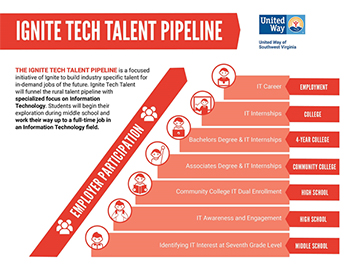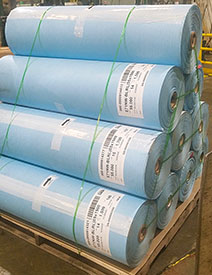As the Port of Virginia expands its terminals, it’s prompted warehousing and logistics firms to also create space for more imported and exported goods. One of the largest areas of recent growth has been in the refrigerated storage industry.
Here are some of the highlights:
Preferred Freezer Services
In April 2019, Preferred Freezer Services LLC announced plans to build a $60 million, 200,000-square-foot cold storage warehouse on Portsmouth’s waterfront, expected to create 60 jobs.
Michigan-based Lineage Logistics LLC acquired Preferred Freezer Services in May 2019 for a reported $1 billion. Based in New Jersey, Preferred Freezer Services opened a Chesapeake warehouse in 2017.
The Portsmouth warehouse will sit on the former site of a factory once run by German chemical company BASF, which sold the site for $2 million in 2017. It is expected to open in May 2021, but construction had not started as of mid-March, according to Lineage spokesperson Rachael Collins.
“The state-of-the-art facility will help Lineage meet the growing demand for cold storage capacity in the region and will be used to import, export, process and distribute a variety of food products,” Collins says.
Americold Logistics
Iowa-based Cloverleaf Cold Storage Co. announced in January 2019 that it would invest $21 million to add 100,000 square feet to its Chesapeake facility, creating an expected 33 jobs and increasing its blast-freezing capability, as well as export and import volume.
In April 2019, Cloverleaf was acquired by Americold Logistics LLC for $1.24 billion, and Americold completed its expansion in Chesapeake in the fourth quarter of 2019.
The Atlanta-based company is a competitor with Lineage Logistics, and with the purchase of Cloverleaf and three other supply-chain business, Americold now has the largest network of temperature-controlled facilities in the world.
Port of Virginia cold-temperature pilot
In February 2019, the Port of Virginia completed the U.S. Department of Agriculture’s 16-month Southeast In-Transit Cold Temperature Pilot program, and now importers of perishable products from South America can move their cargo across the port.
Under the pilot initiative, which started in October 2017, the port could receive cold-treated containers of fruit from Peru, Uruguay and Argentina after a two-week treatment process to guard against fruit flies and other pests. Before, perishables had to first enter ports in the Northeast United States for cold treatment before being distributed to Southern states.
This comes as the port is midway through its $700 million expansion project, which includes more space for refrigerated — known in the industry as “reefer” — cargo at the Virginia International Gateway and Norfolk International Terminals.
“When construction is finished, we’ll have nearly 900 reefer spaces at each terminal, which is a 66% increase in total reefer capacity,” Virginia Port Authority CEO and Executive Director John F. Reinhart said in a statement. The port also handles refrigerated cargo on the Richmond Express barge.
InterChange Cold Storage
A $41.6 million, 230,000-square-foot cold-storage facility built by Rockingham County-based InterChange Cold Storage LLC opened in Mount Crawford last fall, creating more than 100 jobs.
InterChange plans to grow its total cold-storage space to approximately 600,000 square feet, and state officials expect the cold-storage facility to be an integral part of the supply chain serving Shenandoah Valley’s growing cluster of food and beverage manufacturers, which employs more than 9,200 workers.
InterChange also has a 200,000-square-foot logistics center in Portsmouth, which has 20 drop trailer locations and 28 docks.
Shenandoah Growers
Rockingham-based Shenandoah Growers Inc. Logistics Services announced in January 2020 that its business grew nearly 170% by the end of 2019, and it is adding 15 dual-temperature trailers to its fleet.
The company transports produce, food service and floral products, which require varying temperature controls.
The company also added service points and lanes to its system. Shenandoah Growers has six facilities and transports goods to the Southeast, Middle/North Atlantic and Midwest regions of the country.

Subscribe to Virginia Business.
Get our daily e-newsletter.






